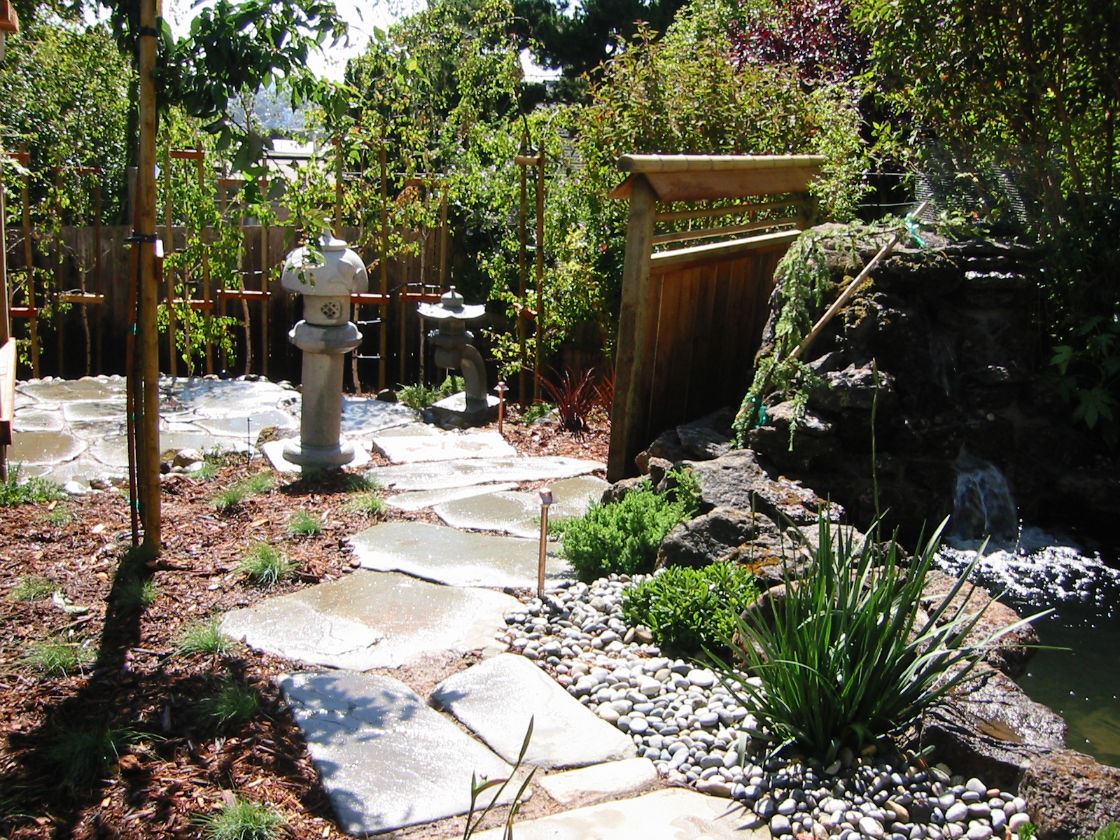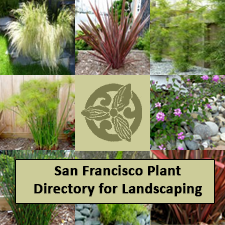
San Francisco’s diverse microclimates and constantly changing urban landscape present unique challenges and opportunities in landscape maintenance. At Tamate Landscaping, we believe in combining the beauty of our city with sustainable landscape practices. Adopting sustainable measures isn’t just about being environmentally conscious—it’s about ensuring our landscapes are resilient, thriving, and adaptable for the future.
Let’s explore how you can introduce sustainable practices into your landscape maintenance.
Plant Selection: Embrace Friendly Flora
The distinctive weather patterns we enjoy in San Francisco allow a unique range of native and non-native plant species, each ideally suited to thrive in California’s environment. These friendly plants have evolved to be resilient, adaptable, and harmonious.
Advantages of Embracing Plants Friendly to California:
- Enhanced drought resistance due to adaptability.
- Reduction in the need for pesticides, as pests and diseases are often naturally regulated when the plants are friendly to the environment.
- Creating a dynamic landscape that shifts and blossoms with the changing seasons offers an ever-evolving visual treat.
When considering plants for your garden, turn to choices like Fraser’s Photina, Heavenly Bamboo, or Mexican Feather Grass. Not only will these plants thrive with minimal intervention, but they’ll also transform your garden into a vibrant hub of local ecology.
Organic Soil Management: Building a Healthy Foundation
The soil beneath our feet is far more than just dirt; it’s a living, breathing ecosystem teeming with countless microorganisms, fungi, and other essential elements. By managing our soil organically, we are taking steps to nourish this complex network, resulting in healthier plants and a more vibrant landscape.
Techniques for Organic Soil Management:
- Mulching: Using organic mulches like straw, leaves, or wood chips can prevent soil erosion, suppress weeds, retain moisture, and gradually break down to enrich the soil.
- Cover Cropping: Planting specific crops, like clover or rye, can protect and enrich the soil between growing seasons. These plants prevent erosion, suppress weeds, and can be tilled into the ground later, adding organic matter.
- Avoiding Soil Compaction: Regularly walking or driving over garden beds can compact the soil, hampering root growth. Consider using stepping stones, walkways, or designated paths to minimize direct soil contact.
Water Conservation: Mindful Usage
San Francisco has a Mediterranean-type climate characterized by wet winters and dry summers. This means that mindful water usage is an important part of sustainable landscape practices. As landscapes thirst for hydration, especially during the drier months, it’s important to adopt strategies that ensure efficient water use without compromising the vitality of our gardens. Some of this can be addressed by having the right water features among your plants, allowing for gentle watering without waste.
Techniques for Efficient Water Usage:
- Drip Irrigation Systems: These systems are a game-changer for conservation. By delivering water directly to the root zone, they ensure minimal loss through evaporation or runoff. Over time, drip systems can reduce water usage by up to 60% compared to traditional methods.
- Rainwater Harvesting: An age-old practice with renewed relevance. Collecting rainwater in barrels or other storage systems provides a natural, untreated source of hydration for your plants. This method reduces dependence on municipal water and ensures your plants receive pH-balanced, chemical-free water.
- Plant Grouping: Grouping plants with similar water needs ensures that each plant gets just the right amount of moisture. This technique, known as hydrozoning, prevents over-watering some plants while under-watering others.
- Mulching: A layer of mulch, whether organic like straw or inorganic like pebbles, acts as a barrier to evaporation. By conserving soil moisture, mulch reduces the frequency of watering and provides the added benefits of weed suppression and temperature regulation.
Integrated Pest Management (IPM): A Balanced Approach
No matter its size, every garden is a complex ecosystem where plants, insects, and microorganisms coexist. While some insects are beneficial, others can be detrimental to the health of our plants. The challenge is to manage these pests without disrupting the delicate balance of this ecosystem.
Enter Integrated Pest Management, an approach that prioritizes environmental balance and minimizes harm.
Techniques within IPM:
- Physical Barriers: Employing barriers like row covers can prevent pests like moths from laying eggs on plants. Similarly, collars around young plants can deter soil pests.
- Beneficial Insect Attractants: Planting flowers or herbs that attract beneficial insects can increase their presence. For example, marigolds and calendula attract ladybugs and other predatory insects.
- Targeted, Minimal Use of Pesticides: If chemicals are needed, IPM promotes using them as a last resort and in a targeted manner. This means selecting the least harmful pesticide effective for the specific pest and applying it judiciously.
- Regular Record Keeping: Documenting what you observe, the actions you take, and the results can help refine future pest management strategies. You can make more informed decisions by understanding what works and what doesn’t.
Green Waste Recycling: Turn Waste into Resource
In gardening, waste isn’t discarded; it’s a resource waiting to be harnessed. Green waste, which includes grass clippings, fallen leaves, and pruned branches, often represents a significant portion of a garden’s byproducts. By adopting a circular approach, we can recycle this waste within the landscape, ensuring that nothing goes to waste.
Advantages of Green Waste Recycling:
- Nutrient Cycling: By returning organic material to the soil, we ensure a constant replenishment of essential nutrients that plants can readily absorb.
- Reduced Dependency on Landfills: By processing and reusing garden waste on-site, we can significantly reduce the volume of green waste sent to landfills. This conserves space and reduces greenhouse gas emissions associated with decomposition in landfills.
- Natural Pest Control: Certain composting techniques, such as hot composting, can help eliminate weed seeds and pathogens. The compost produced acts as a barrier against soil-borne diseases.
- Cost Savings: By recycling green waste, gardeners can save on purchasing commercial compost, mulch, and even some fertilizers.
Crafting a Sustainable Future with Tamate Landscaping
At Tamate Landscaping, our mission is to harmonize the beauty of San Francisco landscapes with practices that benefit the environment. Sustainable practices in landscape maintenance are more than just a trend; they’re an investment in the future of our city and our planet.
If you’re ready to embrace a sustainable approach to your landscape, let’s embark on this journey together. Reach out to Tamate Landscaping today, and let’s craft a greener future.


